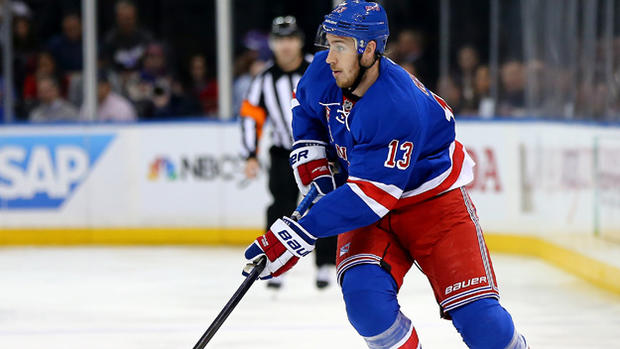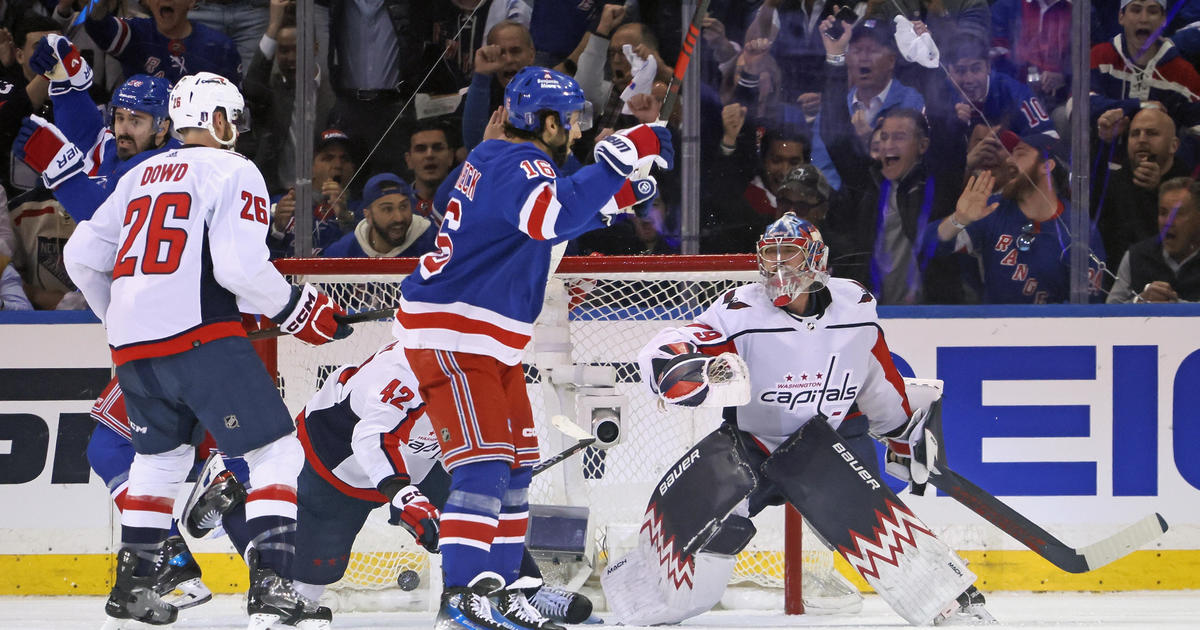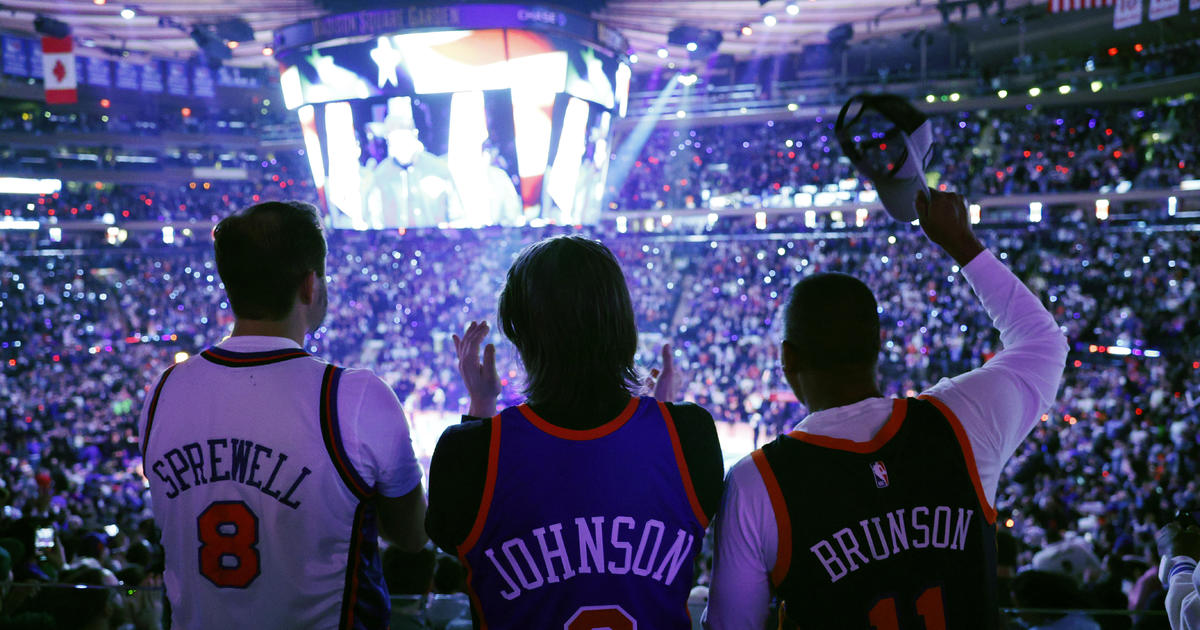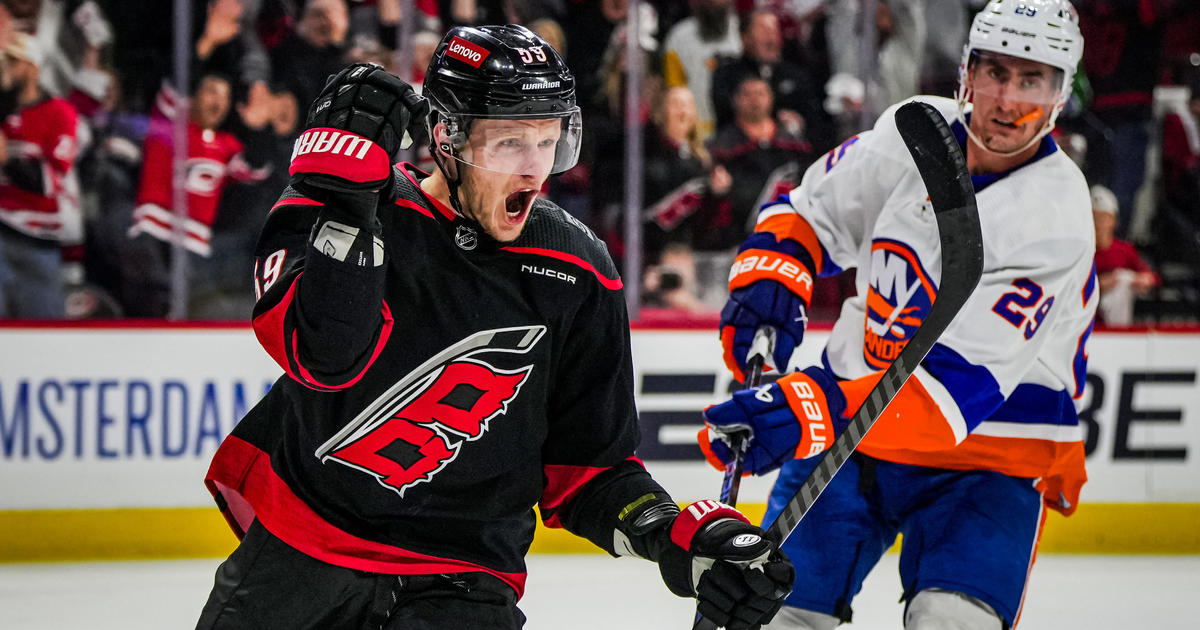Hartnett: With Stepan Gone, Hayes Could See Heavier Workload
By Sean Hartnett
» More Columns
How do the Rangers fill a Derek Stepan-sized hole? This is going to be the biggest question mark surrounding the team heading into September's training camp.
Stepan provided steady play on both ends of the ice and delivered his share of playoff heroics across seven seasons. Replacing his creativity in the offensive end, his intelligent positional play and 0.70-point-per-game production won't be easy.
If coach Alain Vigneault's preference is to keep J.T. Miller on the wing, then Kevin Hayes will be the front-runner to earn the second center role behind No. 1 center Mika Zibanejad in the preseason. Last season, Hayes enjoyed the strongest statistical campaign of his three-year career, collecting 49 points in 76 regular season games. His 0.64 points per game were also a career best.
But the greatest leap in Hayes' growth came on the defensive side of the puck. Vigneault deployed Hayes for an average of 1:25 shorthanded minutes per game. That was three seconds higher than Stepan's average shorthanded ice time and the highest of all Ranger centers. Michael Grabner (1:41 SH TOI/GP) and Jesper Fast (1:34 SH TOI/GP) were the only forwards who spent more time killing penalties on average.
With Stepan out of the equation and Fast sidelined until approximately mid-November, there are going to be minutes in need of picking up on the penalty kill. It should also be noted that newly added center David Desharnais skated for just 13 total shorthanded seconds in 18 games for the Edmonton Oilers after being acquired from the Montreal Canadiens on Feb. 28. Desharnais skated for 47 total seconds on the penalty kill in 31 games for Montreal.
MORE: Hartnett: Rangers Will Miss Stepan's Leadership, Fearlessness
Hayes could be in line for a heavier workload on the penalty kill, on the power play and in even-strength situations. Stepan averaged 18:36 TOI/GP and 2:32 power play TOI/GP. While Zibanejad will be the go-to center on the first power-play unit, Hayes will need to assume a larger slice of the pie in man-advantage situations. He averaged 1:27 PP TOI/GP last season.
Should Hayes fill the vacant No. 2 center role, he will also need to prove that he's capable of handling tougher matchups thrown his way. Vigneault trusted Stepan to handle challenging matchups and leaned on him heavily in all situations. Stepan's points per 60 minutes over the past four seasons were 2.40. That's a hair below Jonathan Toews (2.46), even with Anze Kopitar and slightly higher than Patrice Bergeron (2.37).
That four-year comparison alone shows why it will be so difficult to fill Stepan's skates – but Hayes has demonstrated improvement on both sides of the puck last season and is still just 25. Production-wise and in terms of overall growth, the 6-foot-5 center is in a good spot in his young career.
Hayes is going to have the chance to move from a piece of the puzzle to a core player next season. His development next season will play a major role in whether the Rangers can improve on the last playoffs' second-round exit.
Follow Sean on Twitter at @HartnettHockey




